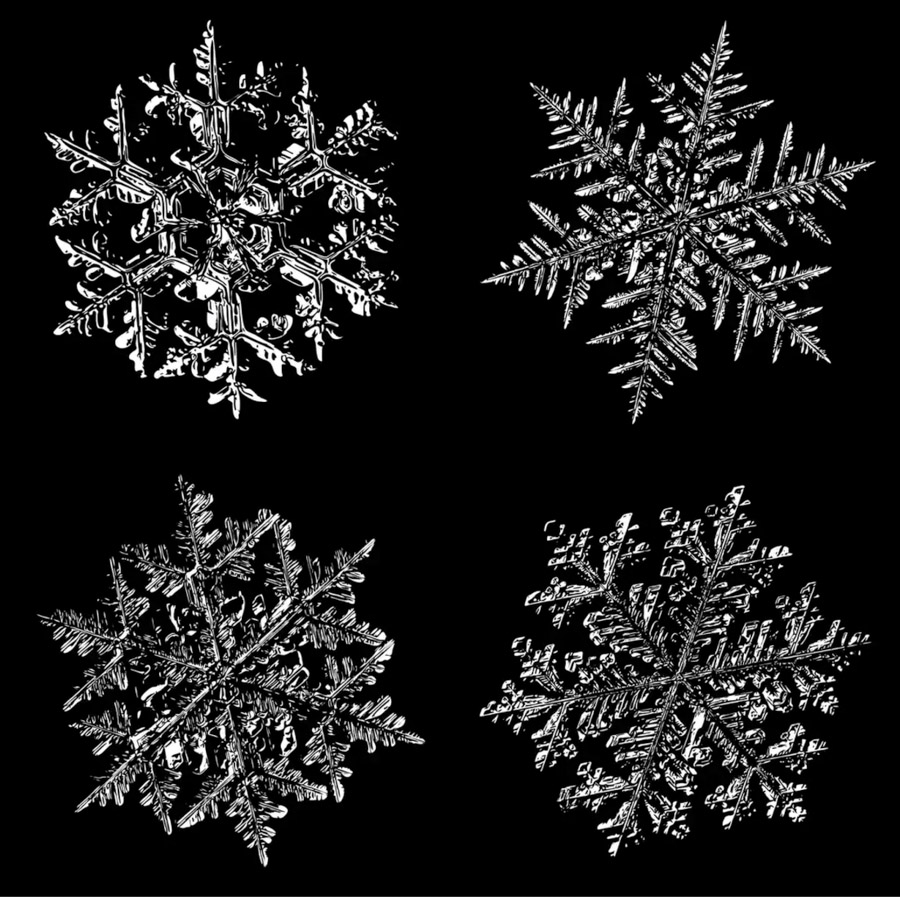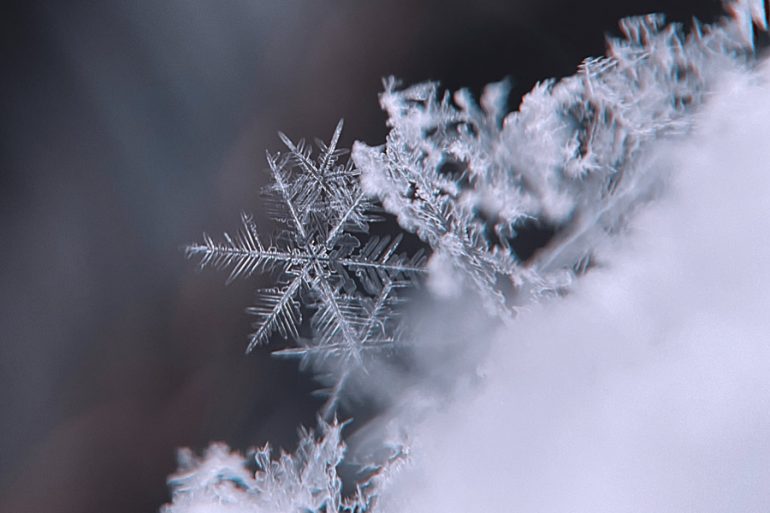Love it or loathe it, you can’t deny the beauty of fresh fallen snow. And perhaps no other weather element has been romanticized more than the snowflake. The contrast of the warm glow of the holiday season draped in a frosty blanket of winter white has been an iconic image for centuries.
In Canada, it is estimated that each winter, more than a septillion snowflakes fall across the country (for perspective, that is a one followed by 24 zeroes) and the journey of every single one of these minute ice crystals is perhaps even more fascinating than Santa’s magical toy delivery.
It all begins high in the upper atmosphere, when a single droplet of water, hanging out in a cloud, freezes around a microscopic dust particle. From there, water vapour freezes onto the crystal and it grows, and grows and grows, until it becomes so “heavy” that it drops out of the cloud and falls as a snow crystal—that magical snowflake.
Thanks, Snowflake Bentley!
While snowflakes are beautifully varied, there is one characteristic that virtually all snowflakes share: they have six sides, thanks to the basic structure of ice. When water freezes into individual ice crystals, its molecules stack together to form a hexagonal lattice. As the ice crystal grows, water can freeze onto its six corners multiple times, causing the snowflake to develop a completely unique, yet always six-sided shape.
Credit for this finding goes to Wilson Alwyn Bentley, the world’s first person to capture the remarkable images of a single snowflake back in 1885. Bentley was an American meteorologist and amateur photographer who ingeniously adapted a microscope and a bellows camera to capture flakes on black velvet before they melted. Throughout his lifetime, Bentley documented more than 5,000 snowflakes. His images have been shared worldwide and much of what we know about what snowflakes look like today have grown from his work.
Today, researchers believe there are about 35 different types of snowflakes, all dependent on temperature and humidity. Some of the more common snowflake types are thin plates, needles, hollow columns, stellar plates, and dendrites. The dendrites are the type that we learned to cut out of paper in elementary school art class.
Nature’s Art Class
You too can witness nature’s artwork: all you need is a magnifying glass, a piece of dark cardboard and fresh falling snow. As the flakes fall, catch them on the cardboard and have a look at how intricate and beautiful nature’s winter work is—just as Wilson Bentley did more than a century ago. Thank you, Snowflake Bentley!

Say It Isn’t Snow?
Here are some more fun facts about our winter companions:
- A typical snowflake may contain one quintillion water molecules. That’s a million times a million times a million!
- Most snowflakes fall at roughly a walking pace—between 1.6 and 6.4 kilometers (1 and 4 miles) per hour.
- A snowflake can drift anywhere from 10 minutes to more than an hour before reaching the ground.
- The majority of the world’s fresh water supply is in ice and snow.
- The world’s tallest snowman — snowwoman, actually — was built in Bethel, Maine in 2008. Named Olympia after Maine’s senator Olympia Snowe, the snowwoman towered 122 feet above the ground. She was so tall that they used skis for her eyelashes and wreaths for her eyes!
Anwar Knight is an award-winning broadcaster, whose genuine and warm engaging personality has made him a favourite with audiences nationwide. With an insatiable curiosity, Anwar connects and inspires real-world action through storytelling. He is a passionate steward of nature and is working to propel efforts to preserve our earth.
Join Anwar on his podcast BigBlueMarble.earth and his recently launched FBLive show “Here n’ There” every Friday at 1pm via
facebook.com/AnwarKnightTV






